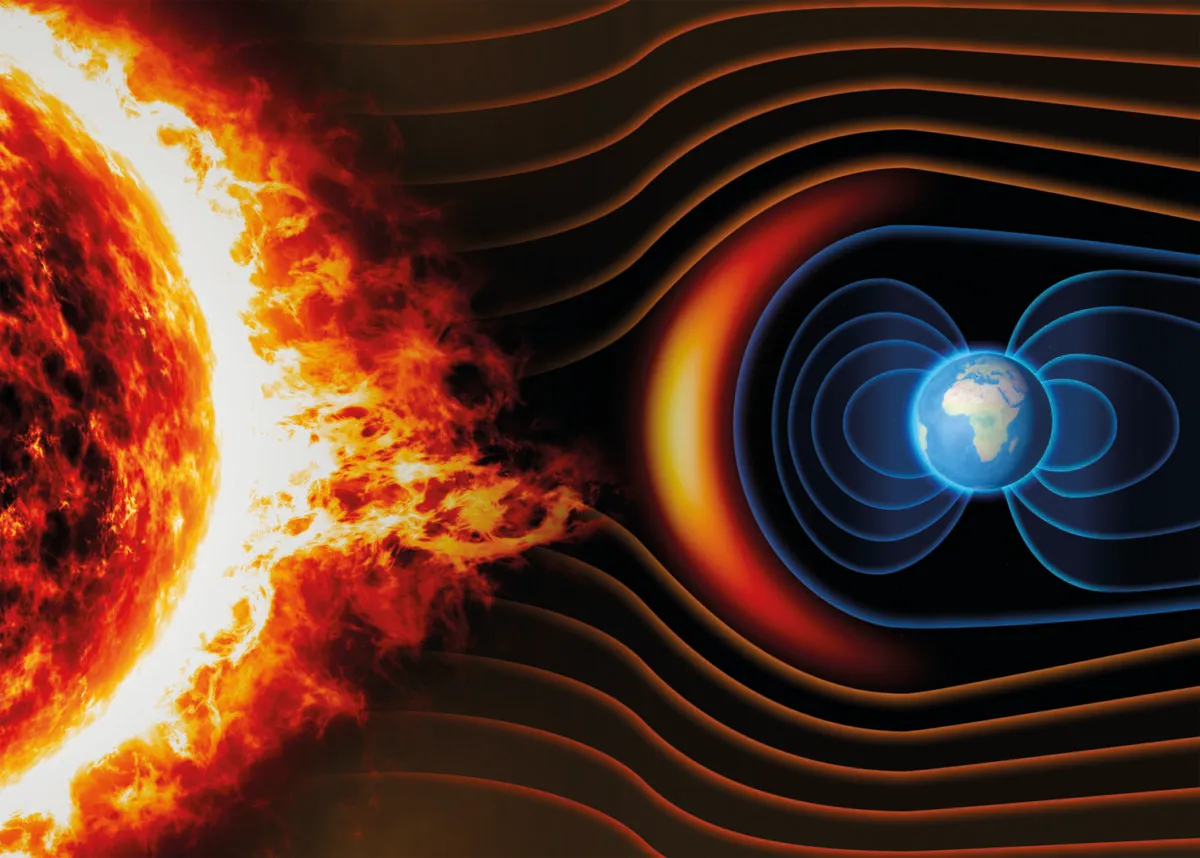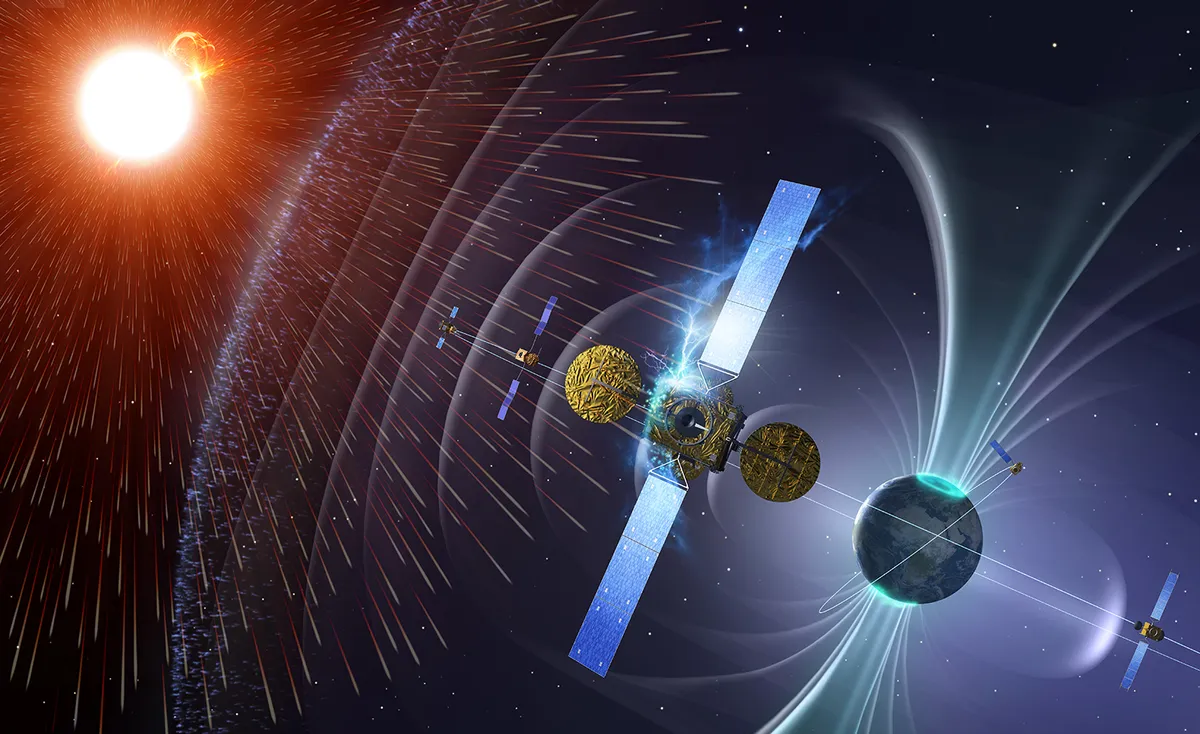Over the past 200 years, Earth’s magnetic field has weakened by about 9%, which could indicate that another pole reversal is coming.
This isn’t the cause of current global warming, but it could still have an important influence on our future climate.
Earth is under continual bombardment from energetic charged particles streaming through outer space.
These are known as cosmic rays and are produced by coronal mass ejections from our own Sun, or come from beyond the Solar System, accelerated by supernovae throughout the Galaxy.
More on astronomy and the climate:
- How can astronomy help us protect Earth?
- How Earth-orbiting satellites monitor climate change
- What can Venus tell us about climate change on Earth?

When these energetic particles, travelling at near the speed of light, encounter Earth’s atmosphere they trigger great showers of secondary radiation, some of which penetrates all the way to the surface.
These charged radiation particles knock electrons off any atoms they pass by, causing ‘ionisation’ which can damage the DNA in our cells and also affect atmospheric processes.
The less energetic cosmic rays are significantly deflected by Earth’s magnetic field, and so the equator receives more shielding from this particle bombardment than the North and South Poles, where the magnetic field lines dip down towards
the planet’s surface.
Certain long-range flight paths – such as from Dubai to San Francisco – take airliners right over the North Pole and this, in combination with the high altitude, means that passengers and crew are exposed to elevated levels of ionising radiation.

But variations in the flux of cosmic rays into Earth’s atmosphere have also been hypothesised to influence the terrestrial climate – perhaps by affecting atmospheric water condensation and the formation of clouds.
And this may be particularly significant during the periods when Earth’s magnetic field reverses, and temporarily weakens.
Jacob Svensmark, in the department of physics at the University of Oxford, has been studying the most recent occasion when Earth’s magnetic field underwent a reversal.
This event, known as the Brunhes–Matuyama reversal, occurred around 780,000 years ago, and the big question is what impact this might have had on the ionisation within the atmosphere from cosmic rays.
Svensmark used computer models to calculate atmospheric ionisation around the world as he varied the simulated magnetic field.
As you might expect, he found that the increase in ionisation during the reversal was most pronounced around the equator of the planet.

But Svensmark was able to calculate this enhancement in the ionisation rate to be about 25% at the equatorial surface as the magnetic field weakened, and over six times higher in the upper atmosphere.
In contrast, he found almost zero change in polar regions, where cosmic rays already have much easier access.
Overall, his model showed a 13% increase in ionisation at sea level around the globe and roughly a doubling at the top of the atmosphere.
Svensmark notes that there appear to be correlations between the flux of cosmic rays reaching Earth’s atmosphere and the climate, although it is not entirely clear what mechanism might cause this.
But if this is a real effect, it is important to understand the changes in the ionisation of the atmosphere during reversals of the magnetic field.
Lewis Dartnell was reading Atmospheric Ionization Rates During a Geomagnetic Reversal by Jacob Svensmark. Read it online at arxiv.org/abs/2209.10104.
This article originally appeared in the January 2023 issue of BBC Sky at Night Magazine.

